I Love Joan Didion’s Stuff
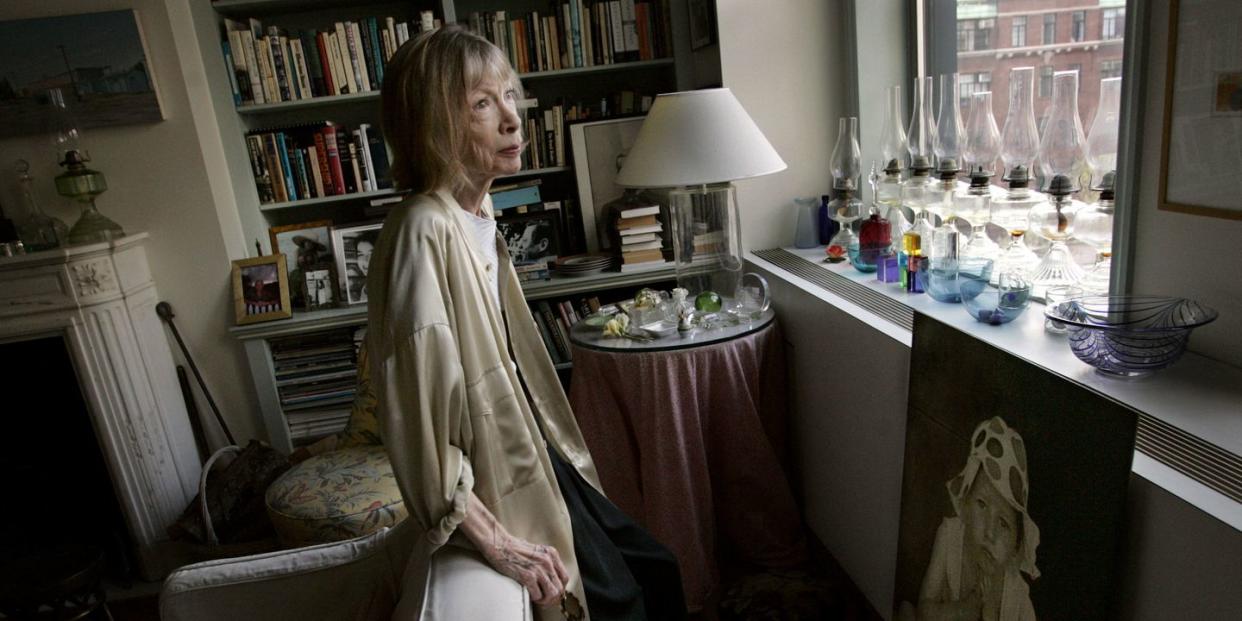
- Oops!Something went wrong.Please try again later.
- Oops!Something went wrong.Please try again later.
Did you know that Joan Didion kept the Celine tortoiseshell sunglasses she wore for the brand’s viral 2015 ad campaign?
That she had some nine surfaces to write on, including desks and writing tables and trestle tables? That she sometimes cooked in a “Maybe Broccoli Doesn’t Like You Either” apron, and owned a work of art that reads, in black graffiti backwards letters, “PAY ATTENTION MOTHER FUCKERS”? (Ha! It was an exhibition poster for a Bruce Nauman exhibition, but still.)
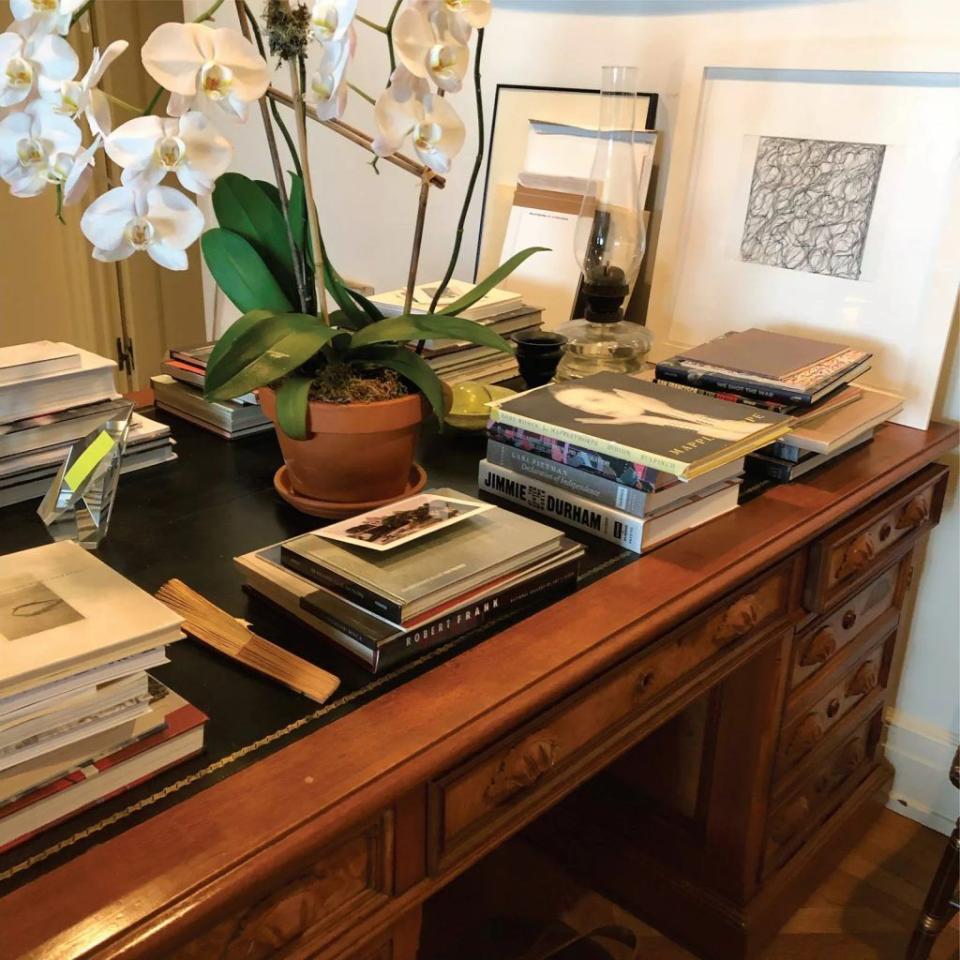
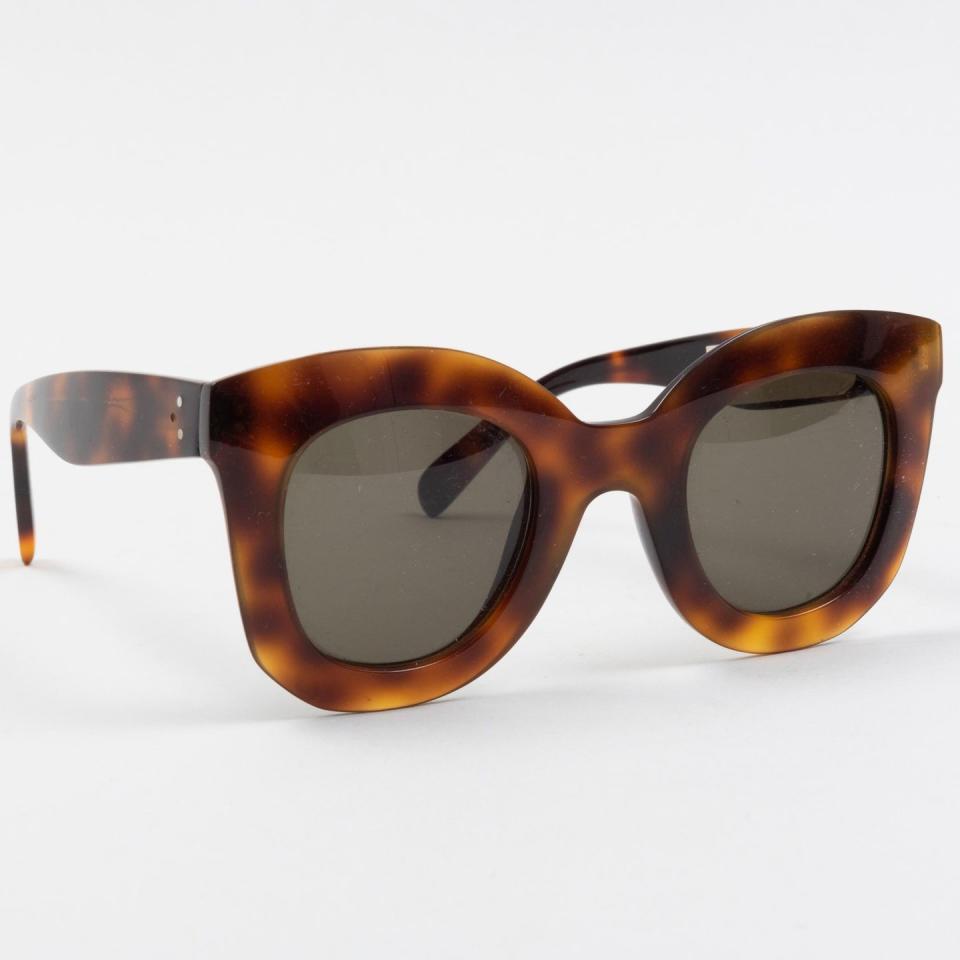
At the time of her death, at age 87 at the end of last year, she had at least 38 blank notebooks waiting to be filled. One of them, you might be surprised to learn of this paragon of Good Taste, had as its cover a Penguin edition of Pride and Prejudice, so you can pretend you’re writing The Great Canon Novel when you’re scribbling down pedestrian observations. Much more Nancy Meyers heroine (or Nora Ephron antiheroine) than you would expect from the famously chic, famously severe writer of books like Play It As It Lays.
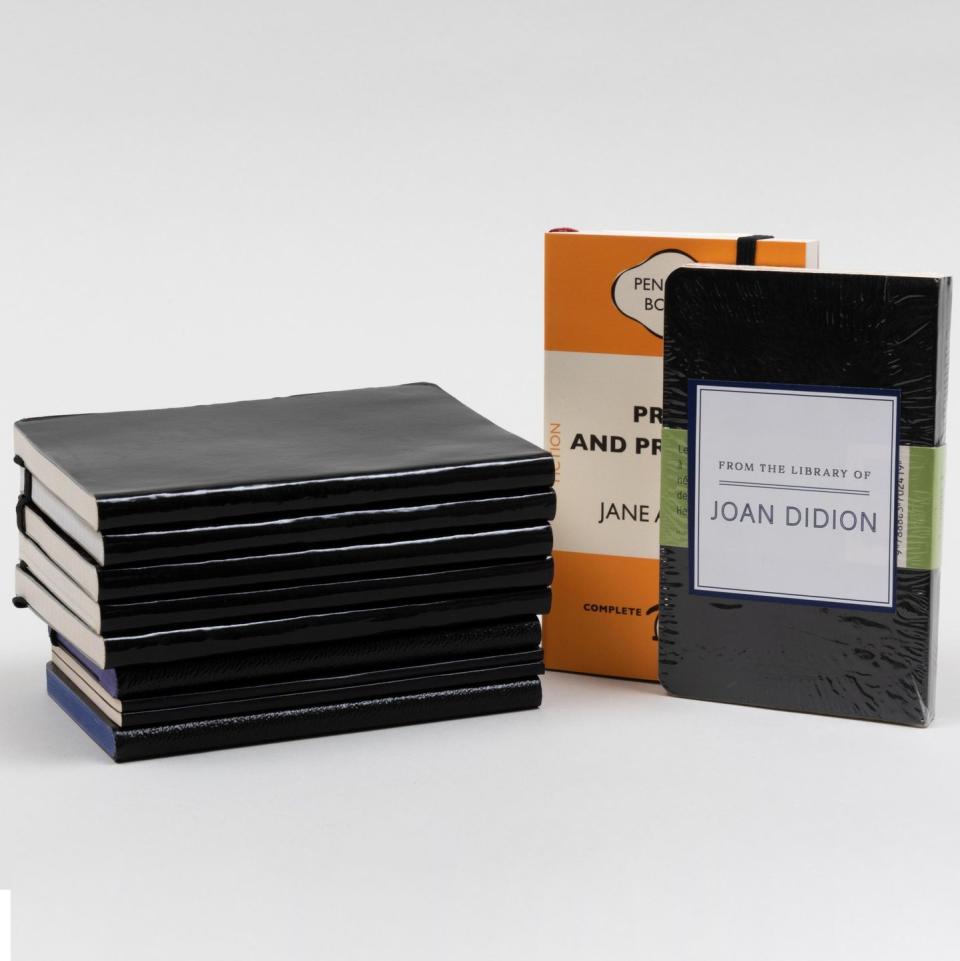
Speaking of Meyers and Ephron: Didion had two white slipcovered sofas and a club chair, with smushy needlepoint pillows. She had a gorgeous rolling pin. And she was allegedly famous for her jambalaya.
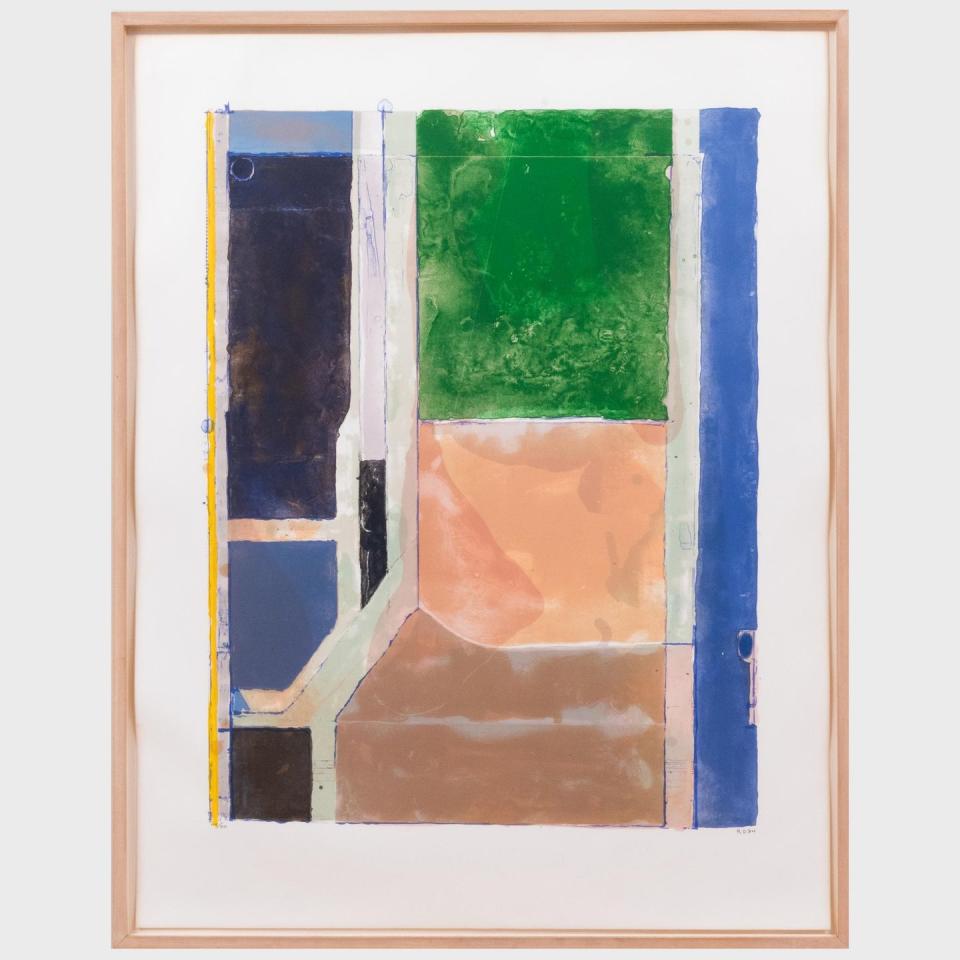
These are the sorts of objects that are available in a November 16th auction called An American Icon: Property from the Collection of Joan Didion, organized by Hudson, New York’s Stair Galleries. (The auction house has been planning the auction since they first visited the apartment Didion shared with her husband John Gregory Dunne in 2003; the proceeds will be donated to Columbia University’s patient care and research of movement disorders, as well as a scholarship for women in literature in Didion’s hometown, Sacramento.) The catalog, released earlier this week, is a Didionism unto itself: a clinical, clear, account of the things Didion owned—spread across office objects, kitchen tools, fine dining accouterments, books, and works of art—and what a team of experts thinks it might be worth. It has the psychological potential of her famous packing list with less of an ominous feeling; more the inspiring zest of biography, the sort of material she would have looked to herself in pursuit of a story. What can these objects, many of them playful, colorful, well-made, and sweet, tell us about this woman whose celebrity loomed so large? Among the monogrammed white napkins, the artworks by California artists like Richard Diebenkorn and Ed Ruscha, and the pricey sets of porcelain, the textures of her dinner parties and afternoons spent working and thinking flicker to life. For a woman who was notorious for writing with chilly detachment, it is one of the warmest portraits ever painted of her.
We live in a world that has vilified stuff. We are choked with stories of hoarders and statistics about how we cannot stop buying clothes and furniture; Marie Kondo has ensured the contemporary ideal is a life only sparsely populated with objects. (Actually, her credo that we possess only things that spark joy is not necessarily a minimalist one, though the minimalists co-opted it. Minimalism, after all, remains the ruling aesthetic of our time. It’s why that footage of the Kardashians’ eerily organized pantries hold us so captive.)
The lionization of Didion, especially by younger women over the past ten years, happened at the same time that social media began to flatten our personalities into the well-framed presentation of products. Perhaps the anti-stuff attitude and the birth of the influencer, someone who finds and creates meaning through things, are related phenomena.
So the treatment of Didion’s icon status, the digital burnishing of it, has been met with skepticism. (I recall in an early skewering of influencer culture, the cruelly underrated film Ingrid Goes West, Didion’s books were the chosen literature of the empty-headed I-am-my-stuff Instagram celebrity played by Elizabeth Olsen.) It isn’t Didion’s talent that’s held in question, of course, but the way she is appreciated: as an aesthetic figure, almost as an object herself. As a persona, as a standin for basic tastefulness, even though her own taste ran much weirder, deeper, and richer than the cruel flatness of contemporary female consumerism might allow.
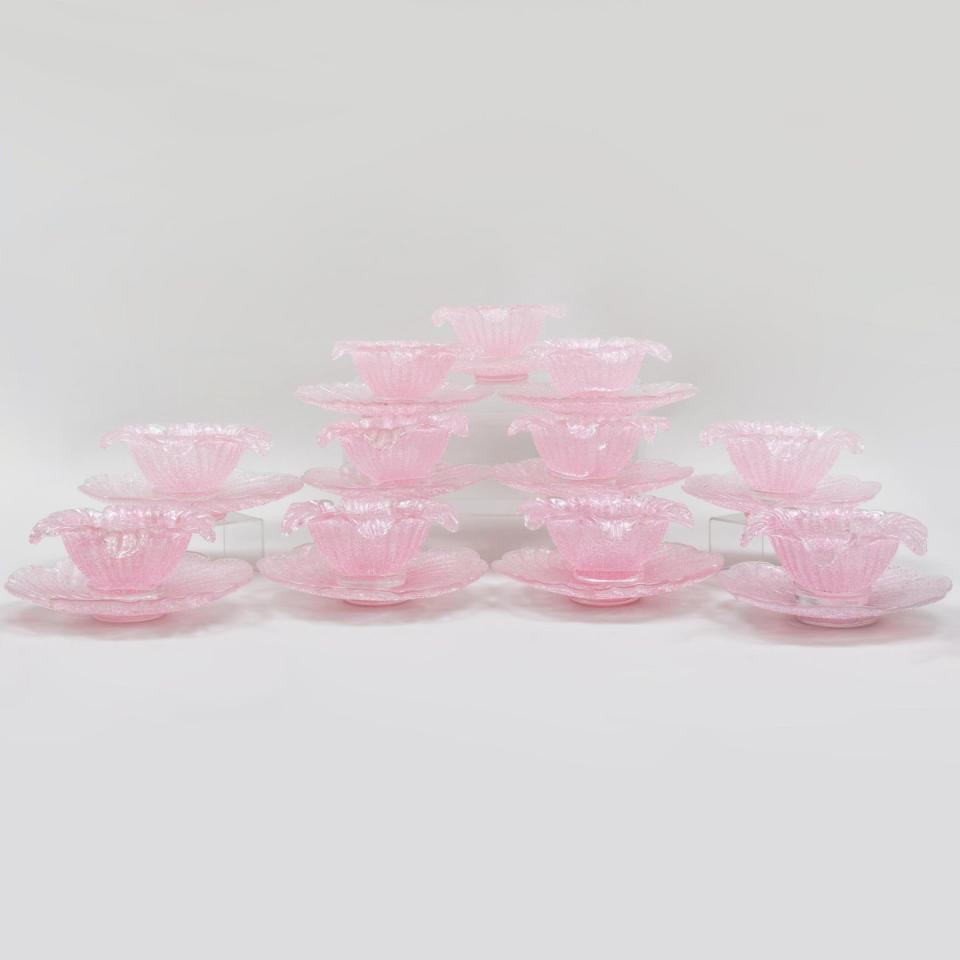
Didion’s auction suggests a sweet awareness of all that and even an attempt to raise the quality of the fetishization of Didion artifacts to the writer herself. Her books are bundled together in appealing selections and roped up with white twine. (Many are grouped by author or subject; a more clever grouping pairs an uncorrected proof of Cynthia Griffin Wolf’s Emily Dickinson biography with Sylvia Plath’s The Bell Jar and The Oxford Book of Marriage.) A book plate—“From the Library of Joan Didion”—has been added by the gallery to each book for ease of bragging rights.
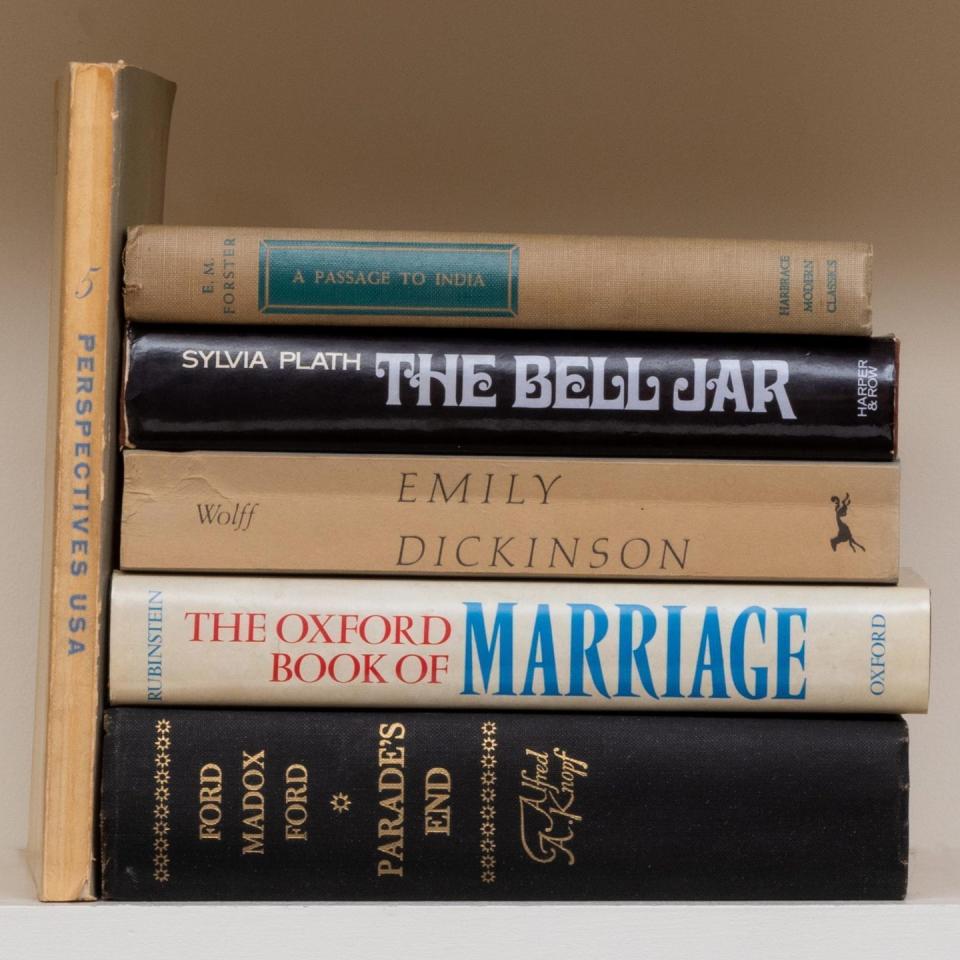
The auction also declares Didion’s unusual and special relationship to things, one we might learn from. Things are treasures. Her collection of seashells is a little aching; you can imagine her strolling some nearly empty beach, gathering them over the years. Each shell is the memory of some walk taken with a long-ago friend, of ideas first thought up and pains shared. It isn’t merely that seeing Didion’s stuff turns you romantic—the pieces are evocative. She pours meaning into her possessions, but seeing her possessions all laid out for us suggests there was something within these objects that she was waking up or unleashing with her tasteful mind. A handful of her favorite books are estimated to sell for $800-$1200, and I regret to inform the aforementioned skeptics among us that I would not be surprised if her Celine sunglasses sell for as much or even more than the bundle of her favorite books. And really, what’s wrong with that? Seeing them ghostly, disembodied, they are just…so…cool. A chilly center, a shield against the world. How could any woman or person who loves literature, even casually, resist the pull of such a jewel?
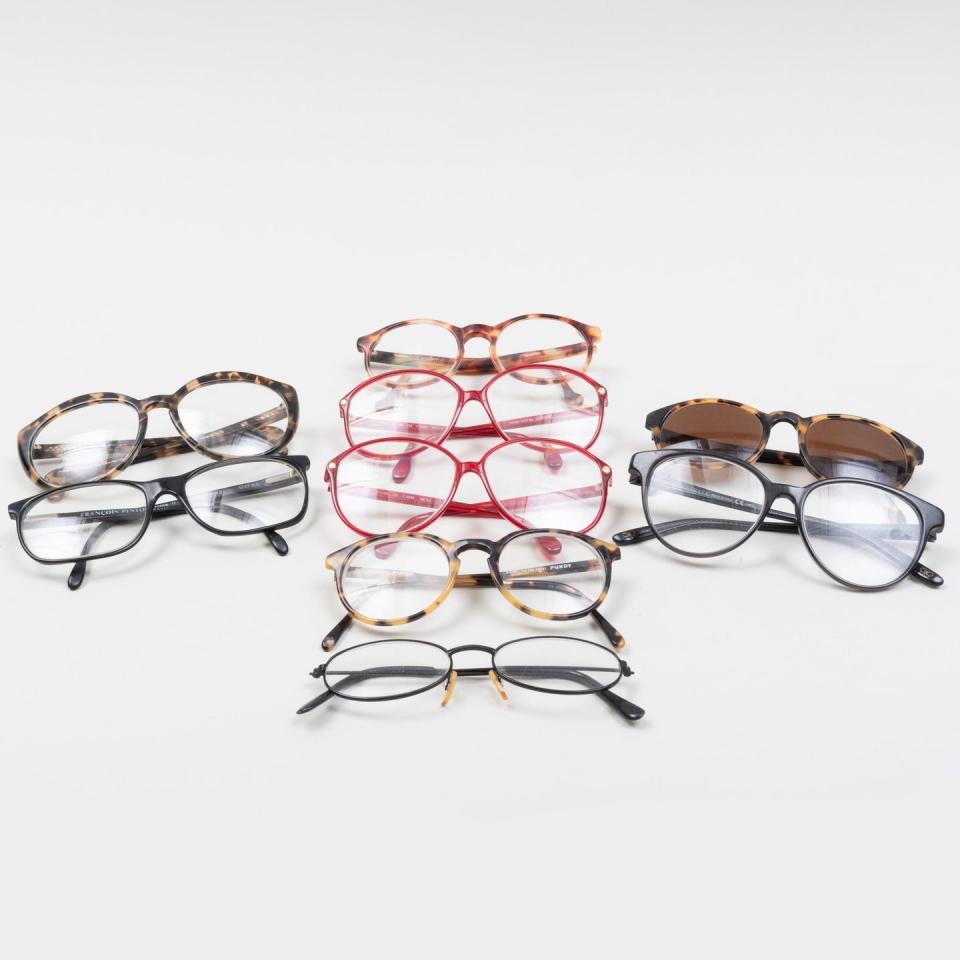
Women have always been known to us through their belongings. (So have men—the Rock ‘n Roll Hall of Fame is filled with lyrics scribbled on napkins and stage clothes and guitars of spectacular provenance—but they always seem to get less flack for it.) Auction houses like Sotheby’s and Christie’s have set records selling the collections of Bunny Mellon and Jackie Kennedy Onassis and even the gowns of Princess Diana; things that are simply fine are made legendary by the eye of their possessor. The same is often true here; when else would a stash of old oversized eyeglasses owned by an octogenarian command over $300? But the eye and the aura are something magnificent, endowing all these things with the spirit of a most incredible and expertly lived life. She was a woman who appreciated a well made napkin; a fabulous Cy Twombley; a warm meal around a lovely table served to fine people in gorgeous Limoges porcelain. She was a woman who knew how to love stuff.
You Might Also Like

